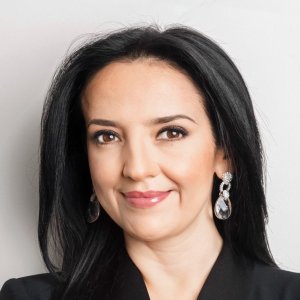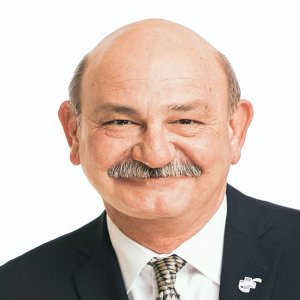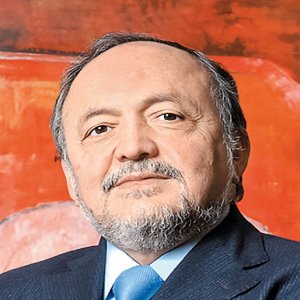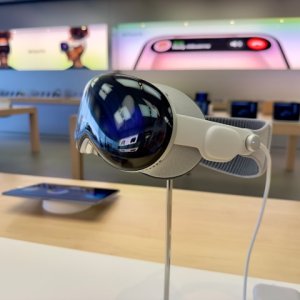Mexico’s Med-Tech Ecosystem is Maturing: Prescrypto

STORY INLINE POST
Q: What impact has COVID-19 had on the use of digital prescriptions in Mexico?
A: This is a technical issue because doctors need to have signatures recognized by SAT. However, the situation has improved a great deal since the onset of the COVID-19 crisis. There is pressure on the side of doctors to keep treating patients without the need for physical contact. Patients, on the other hand, want to maintain channels of contact with the doctor. According to pre-COVID-19 figures, only 13 percent of remote consults in Mexico were conducted through specialized software, which means 87 percent of those happened through WhatsApp, SMS, Skype, Facetime or telephone. In these cases, there is no formal way to create a medical report or prescription. The doctor has few tools to follow up on the treatment. Prescrypto has been a great solution that provides that necessary structure without the need to use SAT signatures, thus improving UX greatly.
Q: How would you describe Prescrypto’s growth over the last months?
A: We have seen good organic growth. At the moment, we do not engage in marketing; growth comes through recommendations or doctors coming to our platform directly. All our KPIs show our presence is growing. To provide one example, the number of doctors using our platform has increased by about 30 percent every week between April and May. Regarding pharmacies, including e-commerce services, we have been a bit more proactive in reaching out to them, since they do not always know who we are.
When Prescrypto started four and a half year ago, the Mexican medical technology ecosystem was still underdeveloped. The market was not sufficiently large to implement sustainable services. This is changing. More companies are starting to enter the market. Many healthcare providers understand that our prices are not too bad and they are looking at digital channels to reach the doctor or the patient. COVID-19 has made this necessary. If you do not use a platform like ours, you are missing out on opportunities. Hospitals and clinics are starting to implement solutions like ours. However, these types of initiatives are slower. If a hospital did not have the digital channels for doctor and patient communication in place already, they will not have them ready in two months.
Q: How are you looking to improve the platform?
A: Our product is simple and very user friendly. It is a lot like Gmail. Small changes can make a big difference, however. For example, we want to improve the way images and prices of medications are displayed. The second aspect we are working on is to improve the experience of the patient. Currently, every aspect on the platform having to do with the doctor is very good. We are starting to understand how to improve the experience for the patient.
The relationship between the doctor and patient is still asymmetric. A doctor on the platform has an average of 1,000 patients. To improve the experience for the patient, we want to increase the interaction options with different parties. For example, we already have the option to contact online pharmacies. However, there are other needs, such as orthopedic product providers or laboratories. Having these services on the platform would increase both the value for the patient, as well as for doctors who want treatment options for the patient.
The benefits of being on our platform are clear for service providers. The costs are practically null. There is just a little training that involves a small learning curve. Other than this, it brings them more patients. Participation should be a no-brainer.
Q: How has your alliance with Amazon evolved over the last year?
A: It is not as evolved as we thought it would be. Amazon did not venture into controlled substances. But we have other alliances, namely with MediMonth, Prixz and Farmalisto. These proved to be strategic last year as they can distribute non-OTC products. This provides maximum value to our platform.
We would like to work with other pharmacies and amplify our collaboration with test laboratories and e-commerce providers of other medical products and services that are not yet on the platform. Obviously, the more options for doctors and patients in terms of suppliers, the better the choices they can make. Currently, pharmaceutical companies have very few options to showcase their products to doctors in person. Our platform provides a great opportunity for them to reach doctors. Prescrypto is also working with a company that offers digital consultations.
Q: Which areas have attracted most doctors to the platform?
A: The biggest growth has been in the area of telemedicine, where the initial contact was already digital. They came to our platform directly or through our alliances. One of the limitations of attracting doctors is that at physical consultations they can provide prescriptions and the information right there and then when the patient is with them. The platform’s adoption also depends on the therapeutic area. Remote ophthalmology consultations are very hard, for example, although follow-ups are possible. In the case of internists or pediatricians, telemedicine is more viable. One big area of opportunity for us is in psychiatry. Many patients are often recurrent and having a digital channel with the doctor is a great help.
Q: How active is the company in other countries?
A: We have investors based in San Francisco but we do not have any activity outside Mexico. Our model is designed to be interoperable in other countries in Latin America, however. Our focus is south of Mexico, not the US. It would be easy to expand our software services, which would be easier than expanding a physical doctor network. There is a regulatory aspect, nonetheless, that would require adaptations to every country. We already have some partners in Colombia and Chile but we have not landed there yet.
Q: Why is telemedicine more advanced in other parts of Latin America, namely Brazil, than Mexico?
A: In Brazil, the med-tech ecosystem is very advanced and investment opportunities are ripe. For example, Doctor Consulta, a similar platform to ours, raised over US$4.5 million last year. Interestingly, almost all the funds that invest in med-tech in Latin America are based out of Brazil. Many only invest in the Brazilian market. Some other reasons behind Brazil’s favorable environment for this sector could include regulation and widespread technology adoption. Which came first is the question. Brazil’s med-tech ecosystem is much like Mexico’s fintech environment. All the factors were in place for it succeed.
Q: What are your priorities and expectations in terms of user growth for 2020?
A: Without a doubt, our biggest priority is to increase the interactions available to the patient. Regarding growth, we are at 3,500 active doctors who reach 175,000 patients. Our expectation for the end of the year is to have 10,000 doctors reaching about 500,000 patients.
Prescrypto is a digital platform that connects doctors, pharmacies and other health product providers with patients. The platform allows doctors to structure information on patients, prescribe medications and provide consultations








 By Jan Hogewoning | Journalist and Industry Analyst -
Thu, 10/01/2020 - 12:52
By Jan Hogewoning | Journalist and Industry Analyst -
Thu, 10/01/2020 - 12:52
















